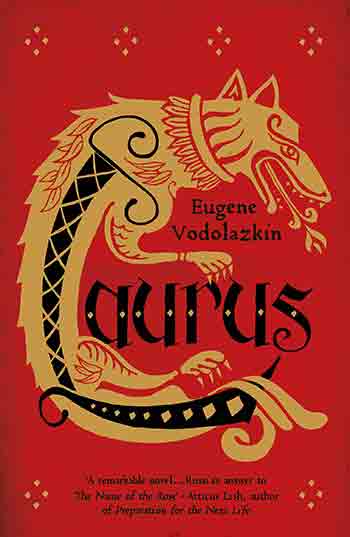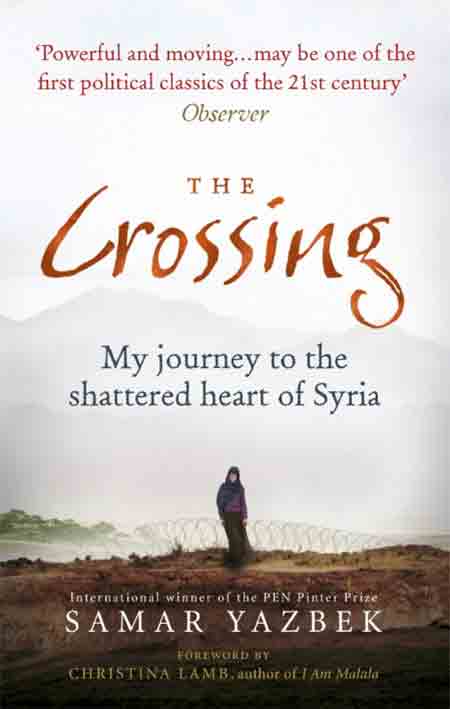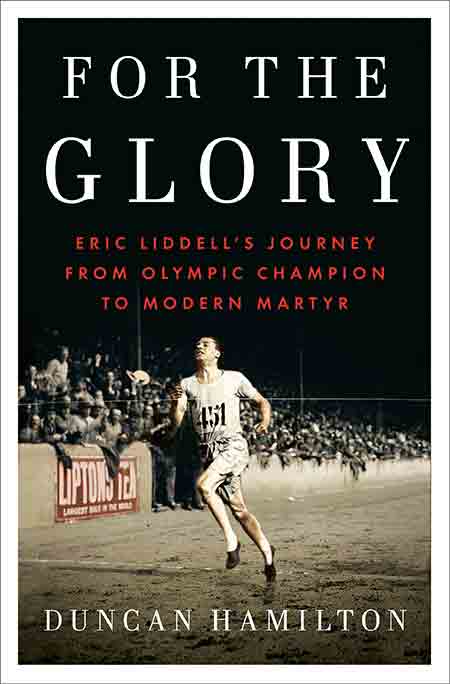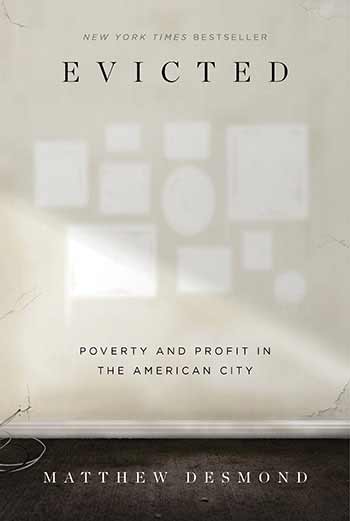Subtotal: $
Checkout-

The Jesus Indians of Ohio
-

Three Open Wounds
-

Why I Love to Wear a Head Covering
-

Vincent van Gogh
-

All Things in Common?
-

The Sacrament of the Last Supper
-

Readers Respond Summer 2016
-

Serving Children in Pyongyang
-

Blessing out of Pain
-

Life Together: Beyond Sunday Religion and Social Activism
-

Solidarity
-

Advice from a Senior Demon
-

Differences
-

Let Yourself Be Eaten
-

The Gift of Repentance
-

At Table
-

Poem: Rainfall
-

From Property to Community
-

Why Community Is Dangerous
-

Confessing to One Another
-

Two Millennia of Christian Community
-

Friars of Manhattan
-

American Hospitality: Jubilee Partners
-

Live Like You Give a Damn
-

The Luxury of Being Surprised
-

The Incident in Changu’s Pepper Patch
-

Two Poems

Laurus
Eugene Vodolazkin
(Oneworld Publications)
Readers who are short on time are often quick to ignore new novels in favor of recent nonfiction (small-talk-enabling) and classics (reliable). Laurus, the novel by Russian medievalist Eugene Vodolazkin, is a powerful reason to resist this temptation. It tells the story of a boy born in 1440 who is baptized as Arseny, loses his parents to the plague, and as an adolescent inherits his grandfather’s practice as herbalist and medicine man. As Arseny passes through life, changing names as he goes, he is variously a father, a penitent, a faith healer, a prophet, a holy fool, a pilgrim, and finally, a saint.
Colorful and earthy, this is no pious tale, yet it is suffused with a sense of the interwovenness of the invisible and the material worlds. Prayer, it becomes clear, is far more potent than Arseny’s medical arts; by the end of the book, he discards his herbs completely. Just as real is the continuing presence of those who have died among the living. It is Arseny’s desire to do penance on behalf of Ustina, the unmarried mother of his son who died in childbirth without the sacrament of confession, that impels him to a life of holiness and self-sacrifice.
Lisa C. Hayden’s translation from Russian, which reflects the original’s mix of colloquialisms and archaic language, is generally fluent and compelling. (One quibble: the pastiches of Chaucerian English can be irritatingly amateurish.) All in all, Laurus is one of those rare books that can help us live our lives with a greater degree of “assurance of things hoped for, and the certainty of things unseen.”
Already a subscriber? Sign in
Try 3 months of unlimited access. Start your FREE TRIAL today. Cancel anytime.
The Crossing: My Journey to the Shattered Heart of Syria
Samar Yazbek
(Ebury Press)
In Yazbek’s Syria, terrifying nightmares, imagined and concrete, run into one another seamlessly. In Homs, the streets are impassable, filled with smoking rubble, toxic dust, and the stench of burned flesh. In the countryside near Aleppo, the beauty of a spring orchard hides snipers lurking among the blossoms.
A Syrian journalist, Yazbek gives scant space to the politics behind the conflict. Her goal is different: to record the shattering stories of her people, from grandmothers and teens to militants (she interviewed more than fifty) – no matter their allegiance. It’s a risky business. In one chilling scene, she interviews a prominent emir of the Islamic State. Sweating with fear, but unable to just sit there and listen to him, she tells him that his views are “absolutely evil.” Unbelievably, he simply dismisses her, saying, “Leave the war to us men, sister.”
At times Yazbek wonders how effective her efforts are. How long, she agonizes, will the blood go on pooling in Syria’s streets and cellars while the world looks on, transfixed, but unable or unwilling to stop the war? No one can answer that. But when the tide turns, it will be thanks in part to the power of stories such as these.
For stories specifically about Christians persecuted by ISIS, there’s They Say We Are Infidels (Tyndale Momentum), in which journalist and World magazine editor Mindy Belz gives on-the-ground reporting and perspectives on what it means to be Christian in the Middle East today.
Already a subscriber? Sign in
Try 3 months of unlimited access. Start your FREE TRIAL today. Cancel anytime.
For the Glory: Eric Liddell’s Journey from Olympic Champion to Modern Martyr
Duncan Hamilton
(Penguin Press)
The defining chapter of Eric Liddell’s life is not the one immortalized by the classic film Chariots of Fire. In the film, the twenty-two-year-old Scottish champion refuses to run the 100 meters in the 1924 Paris Olympics because the race is scheduled on a Sunday, then goes on to win gold at 400 meters, beating his nearest competitor by a whopping seven yards.
The film misses the more amazing story of the life that followed Liddell’s decision to renounce celebrity and a gold-studded athletic career to become a missionary in a remote Chinese village. The grinding poverty in Siaochang, where Liddell had spent his own early childhood as the son of missionaries, took a turn for the worse with the arrival of civil war and Japanese occupation; the danger would separate Liddell from his wife and daughters for the better part of their marriage.
During World War II the Japanese imprisoned Liddell and 1,800 other foreign nationals in Weihsien, a camp that measured a mere 150 by 200 yards. (Another prisoner, Langdon Gilkey, recounts the exceptional communal life that emerged from this duress in his 1966 book Shantung Compound.) Here Liddell gave his last ounce to keep fellow prisoners’ hope alive, dying at age forty-three of an inoperable brain tumor.
In Duncan Hamilton’s impressive new biography, Liddell seems larger than life at times, the biographer awed by the seemingly superhuman goodness of his subject. But through eyes of faith, the irrepressible positivity, dedication, and compassion Liddell demonstrates even in dire situations gives glory to God, who gives such strength of character to mere mortals who are willing to die to self and allow him to work through them.
Already a subscriber? Sign in
Try 3 months of unlimited access. Start your FREE TRIAL today. Cancel anytime.
Evicted: Poverty and Profit in the American City
Matthew Desmond
(Crown Publishers)
He may be a Harvard sociologist, but he’s also an exceptional journalist. In what could prove to be among the most important books of 2016, Desmond shows how housing evictions disrupt the lives of the poorest Americans, who are paying up to 80 percent of their income to rent substandard accommodation in the nation’s worst neighborhoods. He compares the impact of eviction in the lives of black women and children to that of incarceration in the lives of young black men: “Poor black men are locked up; poor black women are locked out.”
Before writing, Desmond spent a year living in a trailer park and an urban ghetto in Milwaukee, following tenants to court, homeless shelters, and funerals, and listening to landlords explain how they find it impossible to build new housing at affordable prices.
“Decent affordable housing should be a basic right.” Desmond writes. “Without stable shelter, everything else falls apart.” But his stories show how other factors, such as family breakdown, mass incarceration, drug addiction, and unemployment all conspire to send people into a downward spiral that leaves them and their possessions back on the sidewalk.
Desmond makes some specific proposals, such as vouchers to make up for the shortfall in public housing – currently four times as many people qualify as can be accommodated and the wait is counted in years and even decades. At the same time, Evicted shows just how hard it will be to solve this silent crisis. But that doesn’t mean we shouldn’t try. The tragic human stories told here demand a response.
Already a subscriber? Sign in
Try 3 months of unlimited access. Start your FREE TRIAL today. Cancel anytime.









































